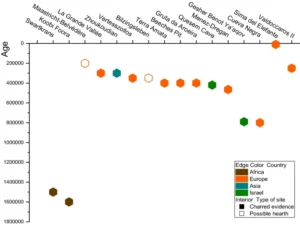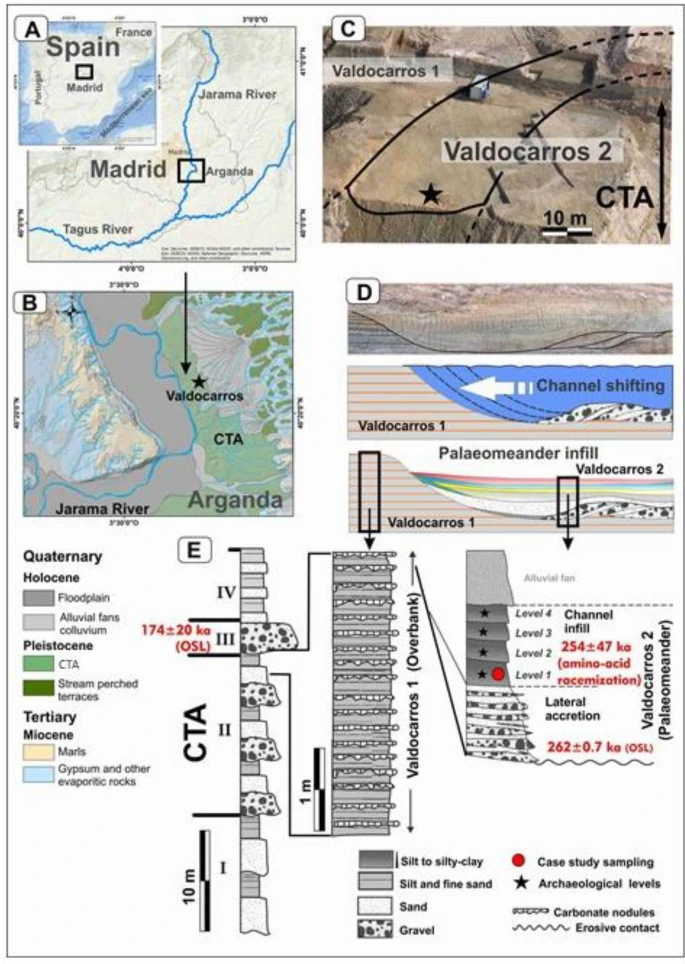The journey from apes to modern-day humans took time to complete. And it was indeed a complex one. Studies suggest that an essential human trait – bipedalism evolved a long time ago. Physical attributes like shorter brains and mortar size evolved over changing environmental pressures. However, these ancestors knew how to use fire or what it probably was. The earliest known evidence of the Hominins (ancestors of modern humans) and the fire dates back to 1 and 1.5 million years, as per evidence from Swartkrans cave in South Africa (outside Europe). It was around 350,000 years ago in Europe, based on findings about the Acheulean technology to control fire. However, a recent study suggests that early humans’ use of fire in Europe dates back 50,000 years more than previously thought.
The Evidence – Early Humans’ Use Of Fire In Europe
Archaeologists have found evidence of human occupancy in the historical site of Valdocarros II in Madrid, Spain. The evidence dates between 235 and 285 kya. Also, this site stands as one of the few places among the Middle Pleistocene localities to offer proper documentation with Acheulean stone tools and bones at various levels. Coming to the main factor, what made archeologists so sure that the evidence on site was not fire by accident and a controlled fire?

The burnt material of Valdocarros II comprises charcoal and wood, diversified and high-concentration PAHs, besides diagnostic conifer-derived triterpenoids. This marks a concrete approach to understanding the complex personalities of Acheulean and their interaction levels with the Pleistocene environment.
Characteristics Of Man-made Fire At Valdocarros II
Regarding “early humans’ use of fire in Europe,” temperature is an essential distinguishing factor differentiating wildfires from man-made ones. Below are all the essential characteristics in detail:
- A wildfire has a higher temperature and spreads across large areas pretty quickly. Their temperature is always above 800 °C.
- Bonfires under control are restricted to a specific location with a similar heat level.
Evidence of early humans’ use of fire in Europe in the historical site of Valdocarros II in Madrid, Spain (250,000 years ago) looks consistent with features of a bonfire. The site of the fire is around 3 m wide, comprising crisscrossed fragments in a circle organization. Also, dark red sediments are in the center, offering a concentrated focus on the heat.
The Reason Behind Hominins At Valdocarros II Using Fire?
The Valdocarros II site is located in an abandoned meander with evidence of freshwater organic outputs when the meander was fully active. Archeological theories suggest that the hominins had chosen the deeper parts of the meander to avail of safety from winds and predators.

The bonfire of the place was arranged out of pinewoods, used to keep oneself safe from predator animals. Also, samples of bone burning in fire explain how the Hominins used the same as a toxin neutralizer. Roasting has a preserving effect on the meat, eliminating chances of oral digestion of parasitic and bacterial elements. Thus enhancing digestibility and nutrient absorption levels to multiple folds.
Also, the data indicate that aquatic plants, shrubs, and trees were abundant at the site of Valdocarros II. The hominins took strategic advantage of the place, using the caves and vegetation. This also suggests that early humans understood changes in the environment.
That is all, with the evidence of Early humans’ use of fire in Europe. Valdocarros remains the largest, combined with Ambrona and Torralba sites in the Iberian Peninsula, of all the Acheulean sites excavated.



